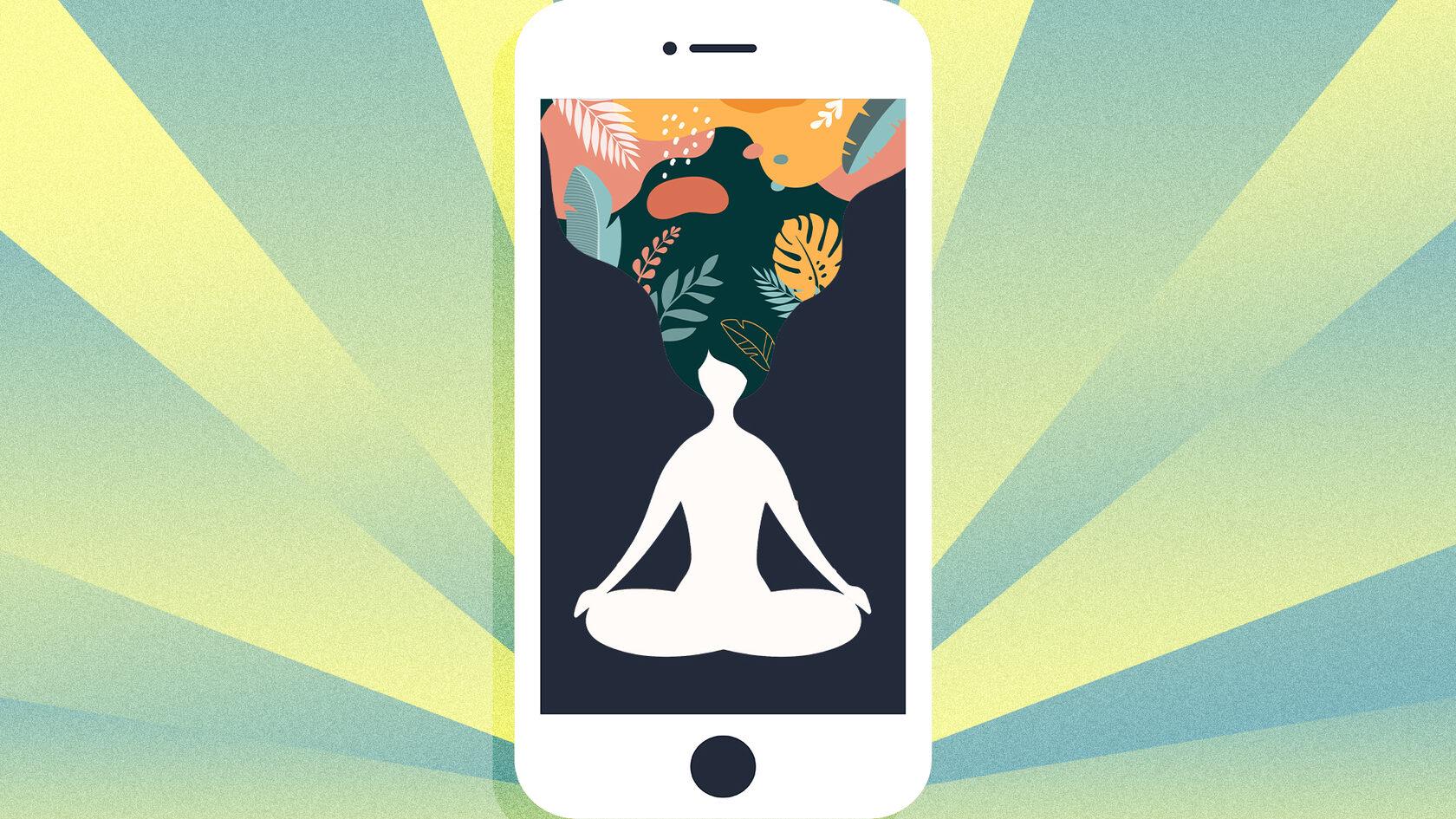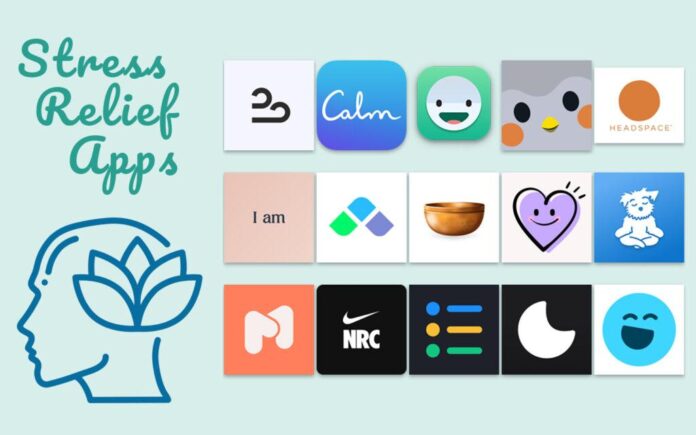In an age were digital solutions permeate every aspect of our lives, the realm of mental health is no exception. With meditation apps gaining immense popularity, many find themselves pondering a provocative question: can these technological tools truly serve as substitutes for customary therapy? As individuals increasingly turn to their smartphones for solace, we delve into the insights of psychologists to explore the efficacy and limitations of meditation apps in the context of mental health treatment. This exploration not only examines the strengths and weaknesses of these applications but also sheds light on the nuanced relationship between self-guided practices and professional therapeutic support. Join us as we navigate the intersection of technology and mental well-being in this thoght-provoking inquiry.
Exploring the Therapeutic Landscape of Meditation Apps
As digital wellness continues to gain ground, meditation apps emerge as a significant player in mental health support. These platforms often provide a variety of mindfulness practices, guided meditations, and even mood tracking features, making them accessible for users looking to incorporate mental wellness into their daily routines. Though, while they offer an array of benefits, they also present certain limitations. As a notable example, many users may not receive the tailored strategies and personal insights that a professional therapist can provide, such as identifying deep-rooted issues or navigating complex emotional landscapes. The challenge lies in understanding that while these apps can enhance mindfulness, they are not substitutes for the in-depth, personalized care that therapy provides.
Another consideration is the appeal of instant gratification that meditation apps present. With a simple tap, users can find relief, but it’s essential to recognize the importance of enduring mental health practices. Regular use of meditation apps can definitely help build a supportive habit, though, the effectiveness can diminish over time without additional therapeutic guidance. while combining app resources with professional therapy may yield the best results,many users find themselves at a crossroads,unsure of how to navigate their mental wellness journey. To grow awareness about the therapeutic influences of these tools, a comparison of features and outcomes can shed light on their role in mental health care.
| Feature | Meditation Apps | Traditional Therapy |
|---|---|---|
| Accessibility | Available 24/7 | scheduled Sessions |
| Personalization | Limited Customization | Highly tailored |
| Cost | Frequently enough Subscription-Based | Often Insurance Covered |
| Duration of Impact | Short-Term Relief | Long-Term Growth |

Understanding the Limitations of Digital Mindfulness Tools
While digital mindfulness tools, such as meditation apps, have gained popularity for their accessibility and convenience, they do have inherent limitations that can impact their effectiveness as a substitute for professional therapy. First, these apps frequently enough lack personalized guidance. Users engage with generic content that may not address their unique emotional challenges or mental health issues. Second, while many apps promote mindfulness and relaxation, they usually do not provide the deeper therapeutic interventions that a trained psychologist can offer, which frequently enough involves exploring underlying issues and developing coping strategies tailored to the individual.
Furthermore, reliance on digital tools can sometimes hinder the development of crucial skills. For instance:
- self-Reflection — therapy encourages introspection and self-awareness, which may not be fully nurtured through app usage.
- Accountability — Scheduled sessions with a therapist often provide structured accountability that self-guided apps cannot replicate.
- Social Connection — The human interaction and support provided in therapy can be essential for healing, whereas digital tools can feel isolating.
Ultimately, while these tools can complement traditional therapy, they cannot replace the nuanced understanding and empathetic communication offered by a trained mental health professional.

The Role of Human Connection in Effective Therapy
The effectiveness of therapy often hinges on the strength of the relationship between the therapist and the client. This connection fosters an surroundings of trust, which is essential for clients to feel safe enough to explore their innermost thoughts and feelings. A solid rapport allows therapists to tailor their approaches, ensuring that the treatment aligns with the individual’s unique circumstances and emotional needs. Key elements that contribute to this vital connection include:
- Empathy: The therapist’s ability to understand and share the feelings of the client.
- Active Listening: Demonstrating genuine interest in what the client expresses.
- Non-Judgmental Attitude: Creating a safe space for open dialog.
This therapeutic alliance is a cornerstone of successful outcomes; studies have shown that clients who engage in a robust relationship with their therapists frequently enough report greater improvements over time. In contrast, while meditation apps can offer beneficial strategies and techniques for self-help, they lack the personalized touch that characterizes effective therapy. For many,the digital experience cannot replicate the human nuances of emotional support; it is indeed this nuanced interaction that deepens understanding and promotes genuine healing. Consider the following aspects in which traditional therapy surpasses app-based solutions:
| Aspect | Therapy | Meditation Apps |
|---|---|---|
| Customization | Highly personalized and adaptive | Generic programs for user groups |
| Accountability | Regular check-ins and feedback | Self-guided, less accountability |
| Emotional Support | Direct human interaction | Automated responses only |

Recommendations for Integrating apps into Mental Health Practices
To effectively integrate apps into mental health practices, therapists and practitioners should first assess the specific needs of their clients. This can involve evaluating various factors such as the client’s level of comfort with technology, their mental health goals, and any specific issues they wish to address. By identifying these elements, practitioners can recommend suitable apps that enhance therapeutic outcomes. It is also beneficial to offer clients guidance on how to properly use these tools within the context of their therapy sessions. For example, practitioners might suggest specific meditation or mindfulness exercises available in the app that correlate with the therapeutic techniques being employed.
Moreover,establishing a collaborative approach can empower clients and increase their engagement with both therapy and app usage. Practitioners should encourage open discussions about the apps clients are using, as well as actively solicit feedback on their experiences. This can foster a sense of ownership in the therapeutic process. Additional recommendations include:
- Creating a balanced routine that incorporates app usage as a supplementary tool rather than a replacement.
- Scheduling regular check-ins to discuss clients’ app interactions and their emotional impacts.
- Providing resources for app selection to ensure clients are using evidence-based options.
The Way Forward
In a world increasingly dominated by technology, meditation apps have emerged as popular tools for managing stress, enhancing focus, and promoting emotional well-being. However, as we explore the insights offered by psychologists, it becomes evident that while these digital aids can complement traditional therapeutic approaches, they aren’t a definitive substitute for therapy itself.The intricate tapestry of human emotions and mental health frequently enough requires the nuanced understanding and guidance that a trained professional provides. As we navigate our personal journeys toward mental wellness, the best approach may lie in a balanced integration of both modern applications and timeless human connection. Ultimately, whether through a screen or in a therapist’s office, the pursuit of mental health remains a deeply personal endeavor, deserving of intention, reflection, and care. So, as you contemplate your own path, consider how these tools can enhance your experience, but remember—the heart of healing often thrives in the embrace of human empathy and understanding.



